| xx |
| SE |
| xx |
| cc |
| www.fretnotgospel.com/scotland.html |
| cc |
| SE |
| SECOND IMPORTANT THING ABOUT SCOTLAND Scotland is now mostly Protestant but churches are shrinking. At first Catholicism was brought to Scotland, by monks and priests from mainland Europe. It is now thought of as the religion of the Scots' old oppressors. There are still a few Catholics in Scotland. There are now several Protestant denominations; the Church of Scotland (Episcopal), Evangelical, Presbyterian, and Free Church. The name of the Free Church is kind of ironic because it's rules are more strict than the rules of any other church. The Free Church people have to go to church twice per day and not do work of any kind, not even cooking, on Sunday. There a few other religions such as Buddhism, Hinduism, and Islam. Like in England, older churches, Presbyterian and Church of Scotland, are shutting down and shrinking but newer Evangelical churches are growing. |
| THIRD IMPORTANT THING ABOUT SCOTLAND The Scotish economy is health. Scotland's biggest industry is tourism. (If I went to Scotland, I would want to go to the Highlands.) Whisky distilling is big but SLOW industry. Whisky takes at least three years to mature! The Scotish Lowlands is probably the most industrialized area in the world. They make textiles, ships, cars, steel, chemical refining, oil refining, and fishing boats. The make North Sea oil from oil fields in the north sea. They have to make and repair many things to keep the oil industry going. Scotish fishing boats have quotas which make that fishermen throw away extra fish. They fish for cod the most. I know this from a sealife show called "The Blue Planet" produced by the BBC. Scotland's economy is healthy, so healthy that the Great British economy wouldn't look so good overall without it. |
| Scotland |
| gg |
| References - Books Cultures of the World, Scotland, Patricia Levy, 2000, p.145 Internet Hadrian's Wall www.bbc.co.uk/history/ancient /romans/hadrian_gallery_01. shtml Hadrian's Wall ask Jeeves/ask.com |
| FOURTH IMPOR-TANT THING ABOUT SCOTLAND Scotland has a unique culture. Clans - Scotland has many different small cultural groups. Scotland's first tribes were Celts, Picts, and Scots. Scotland's name came from the Scots. All of the tribes together were called Caledonians by the ?Romans. Scotland used to use the clan system. It was a system made up of extended families called clans. Each clan had its own tartan, which is a piece of cloth that is patterned the same within a clan but different in other clans. Food - Scots eat alot of fish and chips. They can get them at a chippie, a place that sells fish and chips and other fasty and fatty food. They also eat haggis, sheep stomachs stuffed with chopped sheep organs, spices, and vegetables. Scots also eat oatmeals, porridges, soups, and meats. Scotland also has many sweet desserts such as pudding and cake. There are a few puddings found only in Scotland. Scots also eat a lot of stange mixes of different foods. Many Scottish dishes are made to go with the traditional practice of making use of every last food scrap. I like British, including Scottish, food when I ate it at a pub. Festivals - Scotland has many more festivals than the United States. There are fire festivals where people play with fire at night. The Edinburgh National Festival has vistors from all over the world to come and see music. There is a festival called the Jedburgh Ball Game where people from all over the town of Jedburgh play rugby all through the town. There is a similar game in the town of Lerwick in the Shetland Islands. |
| The Country of Scotland. Scotland is the most northern country in Great Britain. Central Lowland Farms - The center of Scotland is called the Central Lowlands. The Central Lowlands have most of the farms as well. The farms mostly produce sheep, dairy products, and vegetable. The smaller farms are called crofts. Farm people used to have toilets in their backyards. A croft house used to be a "black house", a small 6-foot high stone house with a peat roof. Now people build a more modern croft house. On old-style black house farms people had cats, sheep and chickens. In rural areas, people often have row cottages or row houses. Modern croft houses have a big two-story house, a smaller side house, and an attached barn. Crofters often have extra jobs like salmon farming. People now use black houses as sheds or outhouses. Central Lowland Cities - The Central Lowlands also have most of the cities. Edinburgh, the capital city, as well as Perth, Comrie, Dundee, and Glasgow, the largest city, are in the Central Lowlands. Edinburgh has its own international arts festival where there is classical music, famous performers of opera and theater, and military bagpipe music, called Military Tattoo. Scotland wanted Glasgow to be an industrial center but now it has a main shopping district and an airport. It has grown and now once independent towns have become suburbs. It was once famous for its slums but it has gotten better. Glasgow's name comes from the Celtic word "glas chu" which means green glen. There is city called Dundee which has a company that makes a comic strip named "Beano". Aberdeen is a city between the Don and Dee Rivers. Rivers, Firths, and Seas - Scotland sticks out into the ocean from the rest of Great Britain. A firth is a bay on the ocean named after a river. The main firths are Moray, Forth, Tay, Solway, and Clyde. The North Sea is to the east. The Atlantic Ocean is to the west. The Sea of the Hebrides is around the Hebrides Islands. Eastern Seaboard - The Eastern Seaboard has many of the smaller cities. Some of them are St Andrews, Arbroath, and Peterhead. Northern Highlands - A long skinny lake called Loch Ness forms part of the Great Glen that cuts the northern part of Scotland, called the Northern Highlands, off from the rest. There are not many people living there because it's too mountainous and they can't grow crops and it's very snowy. Islands - There are almost 800 islands around Scotland. The main islands are the Inner and Outer Hebrides, the Shetlands and the Orkneys. Shetland ponies come from the Shetland Islands. Shetland ponies look like they're wearing a wool coat. I don't think I would like to live on Scotland's northern islands because they are too cold. The Shetlands are as far up as Ancorage, Alaska. Where I Would Live - I'd live near Moray Firth or Loch Ness, because I'd always be around tall, grassy hills. I could always go shell hunting. And I would be near both mountain and lowland creatures. |
| FIRST IMPORTANT THING ABOUT SCOTLAND History and Government. Roman Times - The Romans came in the first century AD and conquered parts of Great Britain. They couldn't defeat the Caledonians. So they built a huge wall called Hadrians Wall. It is 73 miles long from Wallsend on the east to Bowness on the west. The eastern extension of the wall is made of stone and the western is made of turf. It is about fifteen feet high. It had along it many forts and mile castles. It was built in the rule of the Roman Emperor Hadrian when he was trying to reorganize the Empire. It was made not to stop movement but to control it. The wall is the dividing line between Scotland and England. It was completed in 123 AD. England and Scotland - The Scottish don't like the English because the English ruled them for many centuries. They banned the clan system and made Scotsmen stop wearing tartans in the 17th-century. They turned large farms that belonged to clans into smaller modern crofts. The Jedburgh ball game used to be played with Englishmens' heads for balls. Almost all of Scotland's history has something to do with fighting the English. One of the main Scottish heroes, Sir William Wallace, fought the English but was eventually killed by them. England wanted Scotland to be more tolerant of Catholics but Scotland didn't. Homerule - Now England and Scotland are more like states in a country than warring countries. They are united in the United Kingdom. Since 1999 Scotland has had its own parliament. That kind of government is called homeruled. |
| Loch Ness. Loch Ness is part of the Great Glen, a long strip of water that completely cuts off the Northern Highlands from the rest of Scotland. The Urquhuart Castle is on the shore of Loch Ness. People always think about Loch Ness because of the Loch Ness monster. I think the Loch Ness monster is a seal or a basking shark. Some elephant seals can be twenty feet long. Some basking sharks can be 35 feet long and they swim at the surface with the tip of their tail fin, dorsal fin, and the tip of their nose sticking out of the water. The Loch Ness monster is supposed to be 10 feet long. There are many fake photos of it on line. The few real ones look like maybe seal, whale, dolphin, or shark. Bull sharks and some sawfish can live in fresh water. They could get there because on either side of Loch Ness, the Great Glen stretches to the oceans. One photo had a green line around the outline of a pleisosaur but part of it looked like a wave. Another photo looked just like a seal's head poking out of the water. Problems with it being a seal is that it never hauls out onto the land and some photos of it looked like it had a long neck. It could be a never-before-seen kind of water creature, like the coelocanth, a fish that was thought to be extinct but was found in the 1930's. I don't think it could be a dinosaur. Some people call the Loch Ness monster "Nessie". I think it really is a basking shark. The basking shark has a long and falcated tail fin. Falcated means curved like a crescent moon. People always draw the Loch Ness monster as having two humps behind its head. On a basking shark, the doral fin and the nose would form the two humps behind the falcated tail "head". Basking sharks have a huge mouth that you can see the sharks' ribs in. When feeding on plankton, they filter through through gills a swimming-pool volume of water per hour. Basking sharks live all over the world including Scotland and California but it is not known where the give birth to live babies. Perhaps it is Loch Ness. |
| What wildlife is there in Scotland? Scotland has alot of wildlife that the rest of Britain does not have. That is because there are not as many people compared to the rest of Britain. Scotland has red deer, which the Scots are very proud of, and also roe deer. There are puffins which have very brightly colored bills and shed their bill plates each year. There are giant grouse called capercaillie which could become extinct because they only live in Scots pine groves. There are the well-known European red squirrels. There are peregrine falcons, golden eagles, white tailed eagles, tawny owls, short-eared owls, eagle owls (which nest on buildings), and ospreys. There are hawfinches and other finches, barnacle geese, lapwings, guillemots, and swans. There are Minke whales, bottlenose dolphins, and common and grey seals. There are also wildcats, pine martens, foxes, badgers, mountain hares, and reindeer!?!?! |
| The Ball in the Store One year the Jedburgh ball game was being played in the shopping district, an area of stores full of fragile gifts. A crowd chased the ball down the street, past a seller's booth, breaking nearly everything in the booth. It rolled into the biggest fragile gifts store in the shopping district. The players ran and the ball broke things. A store owner yelled, "You're ruining my business", to the ball. The ball was bouncing toward the section where everything was 2,000 pounds or over. It broke a 25,000 pound glass cat. Mee-owch. The store owner called 911. His business was being ruined. After hours the store was pile of broken ceramic. The ball and the players were running toward the Jed River, and eventually, the players, the ball, and the store owner ended up in the icy water. |
 |
 |
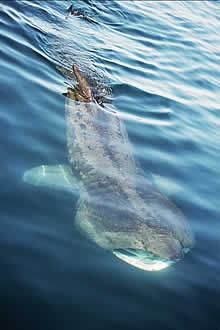 |
 |
 |
 |
| ee |
 |
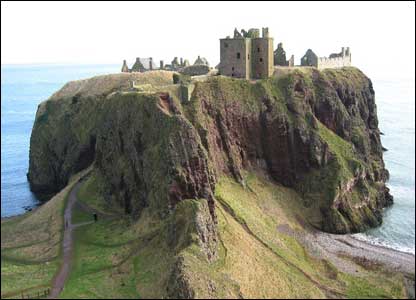 |
 |
 |
| ee |
 |
| Country of the Month |
| by Noah Arthur |
 |
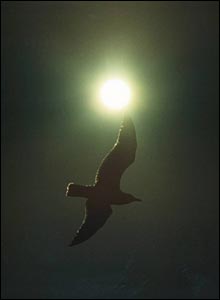 |
 |
 |
 |
 |
 |
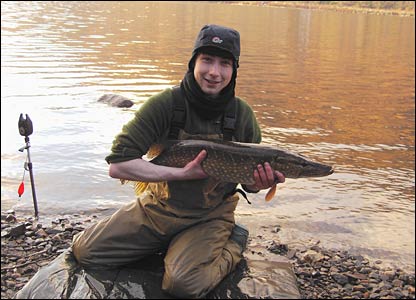 |
 |
| ee |
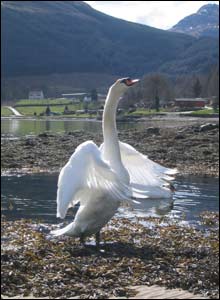 |
| ee |
 |
 |